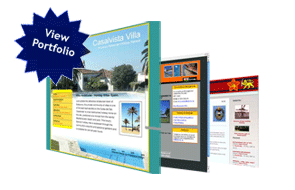Accessibility in Website Design Explained
An accessible website is one that allows as many people as possible to access the information contained within it. An important subset of accessibility is allowing people with visual, aural, or physical disabilities full access to the information and services available in the same way as able-bodied people. Ensuring that your website is not dependant on particular hardware or software is also an important consideration when building accessible websites.
Is it worth it?
- At least 10% of the population in most countries has disabilities; visual, auditory, physical, speech, cognitive, and neurological disabilities can all affect access to the Web.
- Average age of population in many countries is increasing; ageing sometimes results in combinations of accessibility issues; vision & hearing changes, changes in dexterity & memory.
- Many elderly and disabled people rely increasingly on the internet to obtain their goods and services.
Few organisations can afford to deliberately miss this market sector. On top of this, accessible web design contributes to advantages for able-bodies users too. Accessible websites:
- Allow access to users of mobile phones, small display screens, Web-TV and web-kiosks and other new web=enabled devices.
- Increases usability in low bandwidth or slow connection situations.
- Provide access across a wider range of computer hardware and software.
Other extremely important benefits that make accessible websites worthwhile are that:
- Many governments now require certain websites to conform to accessibility guidelines.
- Accessible websites are easier to index by search engines and therefore help drive traffic to your site.
What does it entail?
Many techniques involved in making your website accessible will have no effect whatsoever on the final look and feel of your site for the majority of users. It will however allow users with disabilities to use assistive devices such as screen readers (to read text out aloud to them) and assistive input devices (for people with physical disabilities) to access and use your site. Some of the key concepts are:
- To provide textual alternatives for all images and animations
- To ensure that textual content can be resized to the users personal preference
- To ensure sufficient contrast between text colour and background colour
- To ensure that hyperlinks contain text that describes their purpose.
- To ensure that hyperlinks are large enough to make them easy to select
- To use a consistent and easy to navigate layout
Other benefits
The robots that search engines use to catalogue your website are essentially 'blind' visitors to your site. Accessible websites are therefore more search engine friendly and result in better search engine rankings and ultimately more visitors to your site. Other advantages include:
- Better structure means easier and cheaper site maintenance
- Accessible sites demonstrate that your organisation takes its social responsibility seriously
- Increased support for internationalisation
- Reduces hosting costs
Pixelwave Design is committed to creating accessible websites without compromising aesthetic appeal. I believe accessibility is beneficial for all involved and should be a consideration of every website. In addition to building accessibility into new websites, I can re-structure your existing site to make it more accessible to all.
Related Information


